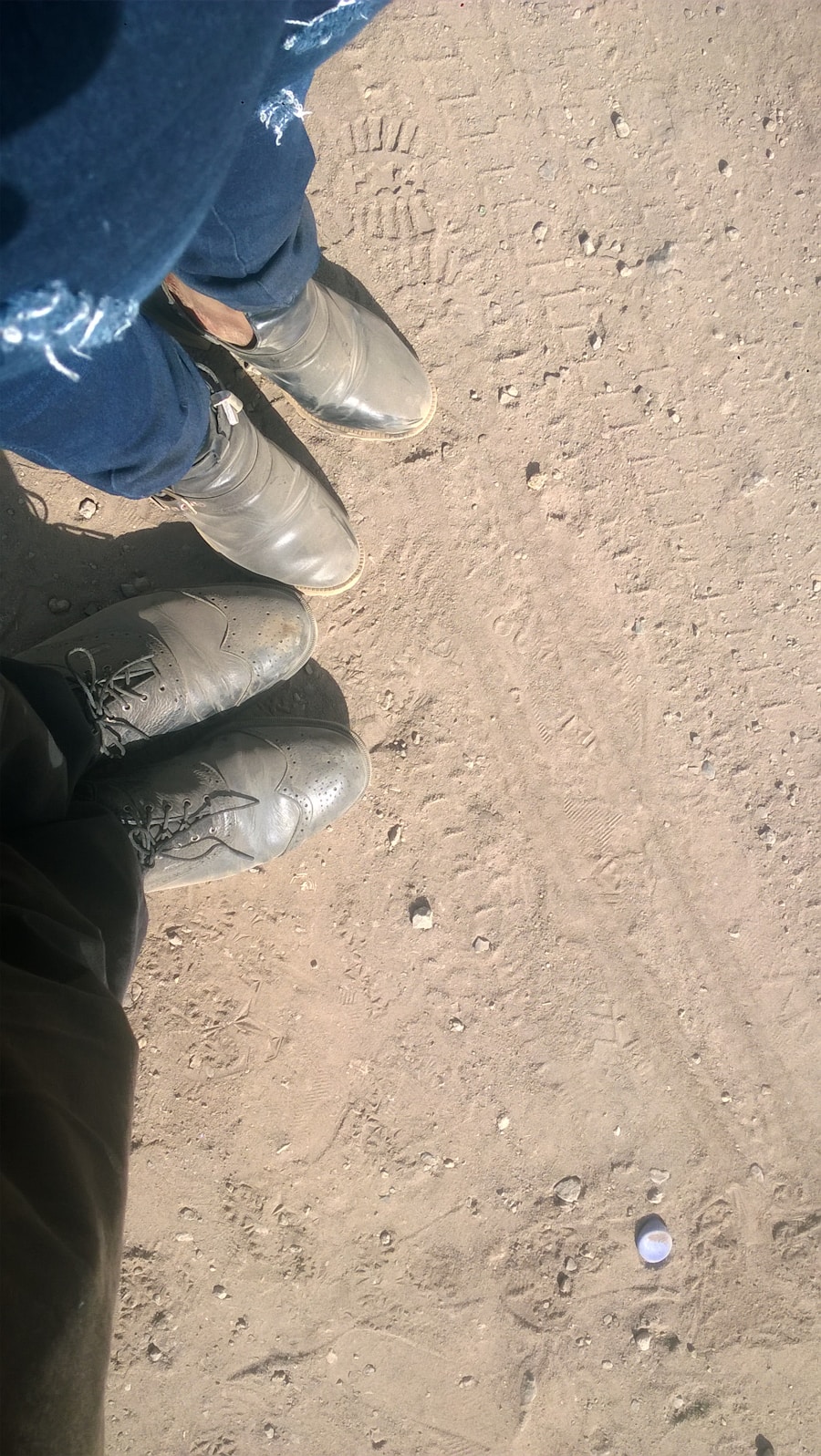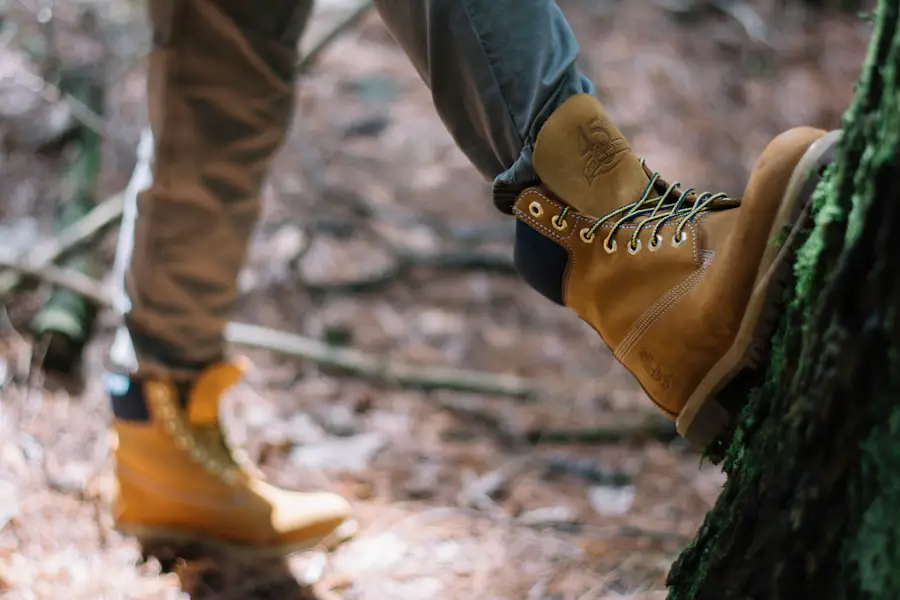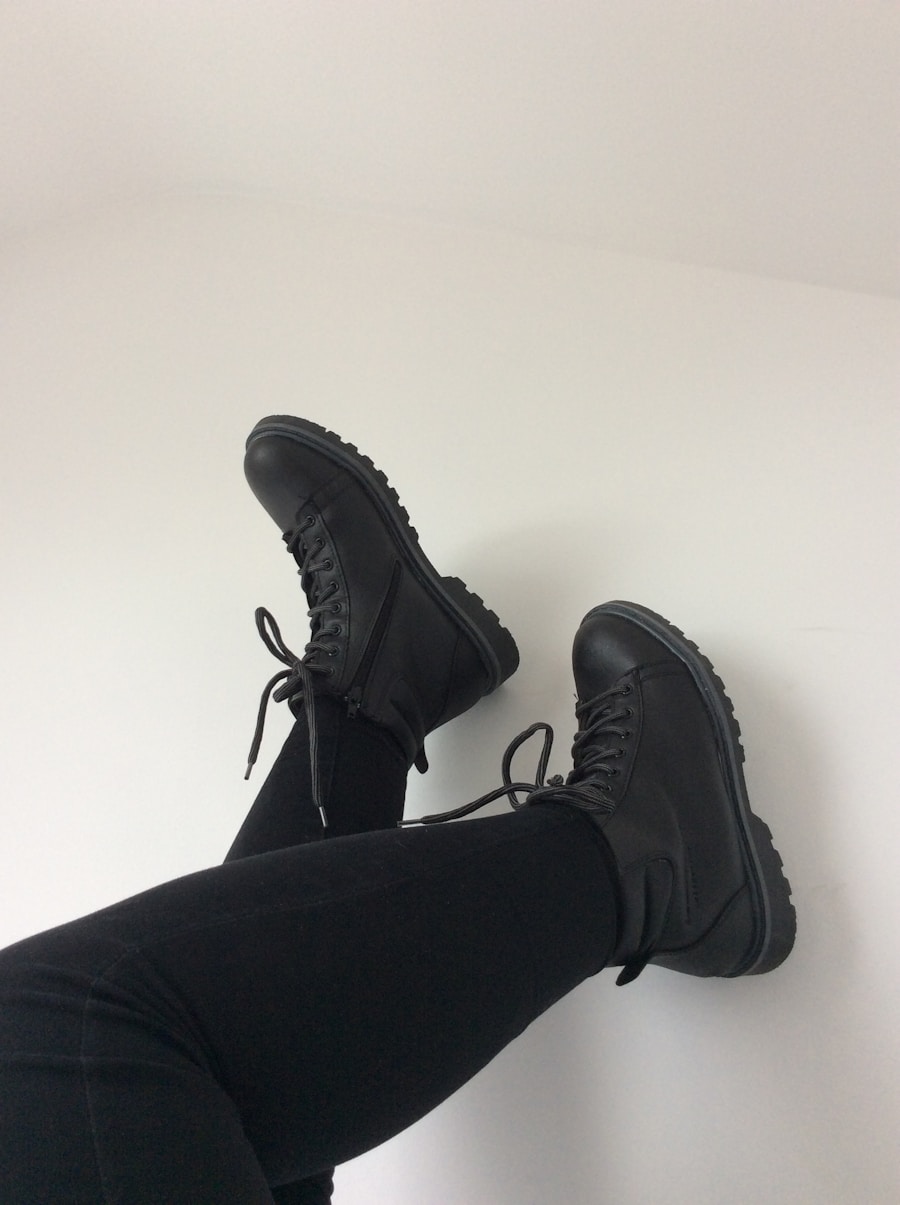Army boots are renowned for their exceptional durability, a characteristic that makes them particularly suitable for hiking in various environments. Constructed from high-quality materials such as full-grain leather and reinforced synthetic fabrics, these boots are designed to withstand the rigors of both military operations and outdoor adventures. The stitching is often double or triple reinforced, ensuring that the boots can endure rough terrains, sharp rocks, and abrasive surfaces without succumbing to wear and tear.
This level of durability is crucial for hikers who may find themselves traversing challenging landscapes where lesser footwear would quickly fail. Moreover, the soles of army boots are typically made from robust rubber compounds that resist punctures and abrasions. This not only enhances the longevity of the boots but also provides a solid foundation for hikers who need reliable footwear that can handle the unpredictable nature of outdoor trails.
For instance, many army boots feature a Goodyear welt construction, which allows for resoling when the soles wear out, extending the life of the boot significantly. This durability translates into a long-term investment for hikers who frequently engage in outdoor activities, as they can rely on their army boots to perform consistently over time.
Key Takeaways
- Army boots are extremely durable and can withstand the rigors of hiking for extended periods of time.
- Army boots provide excellent support and stability, reducing the risk of ankle injuries during hikes.
- The traction and grip of army boots make them suitable for various terrains, including rocky, muddy, and slippery surfaces.
- Despite their weight, army boots offer comfort for long hikes, making them a popular choice among hikers.
- Army boots are designed to be waterproof and weatherproof, keeping the feet dry and protected in all conditions.
- Army boots are versatile and can be used in different hiking conditions, making them a practical investment for outdoor enthusiasts.
- The breathability and ventilation of army boots ensure that the feet remain cool and comfortable during hikes.
- While army boots may be more expensive, their durability and performance make them a valuable investment compared to other hiking footwear.
The support and stability provided by army boots
Support and stability are paramount when it comes to hiking, especially on uneven or rugged terrain. Army boots are engineered with features that enhance ankle support, which is vital for preventing injuries during long hikes. Many models come with a higher cut that wraps around the ankle, providing additional support and reducing the risk of sprains.
This design is particularly beneficial for hikers who carry heavy packs or navigate steep inclines, as it helps maintain proper alignment and balance. In addition to ankle support, army boots often incorporate advanced cushioning systems that absorb shock and reduce fatigue over extended periods of wear. The insoles are typically designed to provide arch support, which is essential for maintaining comfort during long hikes.
This combination of ankle support and cushioning allows hikers to traverse challenging terrains with confidence, knowing that their feet and ankles are well-protected. For example, a hiker tackling a rocky mountain trail will appreciate the stability offered by army boots, as they can focus on navigating the path rather than worrying about potential injuries.
The traction and grip of army boots on different terrains

One of the standout features of army boots is their superior traction and grip on a variety of terrains. The outsoles are designed with aggressive tread patterns that enhance grip on both wet and dry surfaces. This is particularly important for hikers who may encounter slippery rocks, muddy trails, or loose gravel.
The rubber compounds used in the outsoles are engineered to provide optimal friction, allowing hikers to maintain their footing even in challenging conditions. For instance, when hiking in a forested area after rainfall, the risk of slipping increases significantly. Army boots equipped with deep lugs can dig into the mud and provide the necessary grip to navigate through such conditions safely.
Additionally, many army boots are designed to perform well on hard surfaces like asphalt or concrete, making them versatile for urban hiking or transitioning from trail to town. This adaptability ensures that hikers can confidently tackle diverse environments without needing to switch footwear.
The weight and comfort of army boots for long hikes
| Boot Brand | Weight (per pair) | Comfort Rating (out of 5) |
|---|---|---|
| Nike SFB Gen 2 | 3.5 lbs | 4.5 |
| Rocky S2V | 4.1 lbs | 4.0 |
| Danner Tachyon | 2.8 lbs | 4.7 |
| Under Armour Valsetz RTS 1.5 | 3.6 lbs | 4.3 |
While durability and support are critical factors in choosing hiking footwear, weight and comfort cannot be overlooked. Army boots have evolved over the years to strike a balance between being robust and lightweight. Modern designs often incorporate lighter materials without compromising on strength, allowing hikers to enjoy the benefits of sturdy footwear without feeling weighed down.
This is particularly advantageous during long hikes where every ounce counts; lighter boots can significantly reduce fatigue over time. Comfort is also a key consideration in the design of army boots. Many models feature cushioned insoles and padded collars that enhance overall comfort during extended wear.
The fit is often tailored to accommodate various foot shapes, ensuring that hikers can find a pair that suits their needs. For example, a hiker embarking on a multi-day trek will appreciate the comfort provided by well-fitted army boots, as they can prevent blisters and discomfort that often arise from prolonged use of ill-fitting footwear. The combination of lightweight materials and thoughtful design makes army boots an excellent choice for those who prioritize comfort during their outdoor adventures.
The waterproof and weatherproof features of army boots
Weather conditions can change rapidly in outdoor environments, making waterproofing an essential feature for hiking footwear. Army boots often come equipped with waterproof membranes such as Gore-Tex or similar technologies that keep feet dry while allowing moisture to escape. This is particularly beneficial when hiking through wet grass, crossing streams, or navigating muddy trails.
The ability to keep feet dry not only enhances comfort but also helps prevent blisters and other foot-related issues that can arise from prolonged exposure to moisture. In addition to waterproofing, many army boots are designed with weatherproof features that protect against various elements such as snow, rain, and wind. Insulated models are available for colder climates, providing warmth without sacrificing breathability.
For example, a hiker traversing snowy terrain will benefit from insulated army boots that keep their feet warm while also being waterproof, allowing them to focus on their hike rather than worrying about cold or wet feet. This combination of waterproofing and insulation makes army boots a reliable choice for year-round hiking in diverse weather conditions.
The versatility of army boots for different hiking conditions

The versatility of army boots is one of their most appealing attributes for hikers who engage in various outdoor activities. These boots are designed to perform well across different environments, from rocky mountain trails to sandy deserts. Their robust construction allows them to handle diverse conditions without compromising performance or comfort.
Hikers can confidently wear army boots whether they are navigating steep inclines, crossing streams, or walking on flat terrain. Moreover, army boots can easily transition from hiking trails to urban settings, making them suitable for those who enjoy exploring cities after a day in nature. Their rugged appearance often blends well with casual attire, allowing hikers to maintain a cohesive look while enjoying the benefits of functional footwear.
For instance, after a day spent hiking in the woods, a hiker can comfortably stroll through town without needing to change shoes. This adaptability makes army boots an excellent investment for individuals who appreciate versatility in their outdoor gear.
The breathability and ventilation of army boots during hikes
Breathability is another critical factor when considering footwear for hiking, especially during warmer months or strenuous activities. Army boots are often designed with breathable materials that promote airflow while still providing protection against the elements. Many models incorporate mesh panels or moisture-wicking linings that help regulate temperature and keep feet dry by allowing sweat to escape.
This ventilation is particularly important during long hikes where heat buildup can lead to discomfort or blisters. A hiker wearing well-ventilated army boots will notice a significant difference in comfort levels compared to wearing non-breathable footwear. For example, during a summer hike in a hot climate, breathable army boots can help maintain a comfortable temperature inside the boot while preventing excessive moisture buildup from sweat.
This feature enhances overall performance and allows hikers to focus on their journey rather than being distracted by discomfort.
The cost and value of army boots for hiking compared to other hiking footwear
When evaluating hiking footwear options, cost is often a significant consideration for many individuals. Army boots tend to be priced competitively compared to specialized hiking shoes or boots; however, their value extends beyond just the initial purchase price. Given their durability, support, and versatility, army boots often represent a better long-term investment than cheaper alternatives that may require frequent replacement.
While some may argue that dedicated hiking shoes offer specific advantages tailored to certain activities, army boots provide an all-around solution suitable for various conditions and terrains. For instance, while lightweight trail runners may excel in speed on well-maintained paths, they may not offer the same level of protection or durability as army boots when faced with rugged landscapes or adverse weather conditions. Therefore, when considering the overall value—factoring in longevity, performance across diverse environments, and comfort—army boots often emerge as a wise choice for avid hikers looking for reliable footwear that can withstand the test of time.
If you are considering using army boots for hiking, you may also be interested in finding the best sleeping bag for backpacking travel. Check out this article on the best sleeping bag for backpacking travel to ensure you have all the necessary gear for your outdoor adventures.
Love travel? Join Our Facebook Community For More Tips.
FAQs
Are army boots good for hiking?
Yes, army boots can be good for hiking due to their durability, ankle support, and traction. However, it’s important to consider the specific terrain and conditions of the hike before choosing army boots.
What are the benefits of using army boots for hiking?
Army boots are designed to withstand rugged terrain and provide excellent ankle support, making them suitable for challenging hiking conditions. They also offer durability and protection for the feet.
Are there any drawbacks to using army boots for hiking?
While army boots are durable and provide good ankle support, they can be heavier and less flexible than traditional hiking boots. This can make them less comfortable for long hikes or for those who prefer a lighter footwear option.
What should I consider before using army boots for hiking?
Before using army boots for hiking, consider the specific terrain, distance, and weather conditions of the hike. It’s also important to ensure that the army boots are broken in and comfortable for long periods of walking.
Can army boots be used for different types of hiking?
Army boots can be suitable for various types of hiking, including rugged terrain, steep inclines, and wet conditions. However, they may not be the best choice for casual or leisurely hikes where lighter, more flexible footwear may be preferred.
